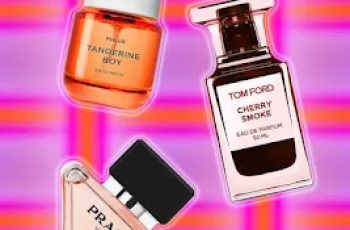
👁️ The Ultimate Guide to Eye Cream: How to Choose, Use & Love It
Let’s talk about eye cream—a skincare staple that’s as controversial as it is mysterious. Some people can’t go a day without it, while others think it’s nothing more than fancy face moisturizer in a tiny jar with a big price tag.
But here’s the thing: the delicate area around your eyes is different. It’s thinner, more sensitive, and quicker to show signs of aging, fatigue, and environmental stress. That’s why, when used correctly, eye creams can be your secret weapon for maintaining bright, youthful, and well-rested eyes—no matter your age or skin type.
In this complete guide, we’re going to demystify everything about eye creams: what they do, who needs them, which ingredients actually work, how to use them the right way, and even when to start.
Ready? Let’s get into it.
🧴 What Does Eye Cream Actually Do?
The skin around your eyes is approximately 40% thinner than the rest of your face. That means it loses moisture faster, is more prone to irritation, and tends to show signs of aging sooner. It’s also constantly moving—blinking, smiling, squinting—which speeds up wear and tear over time.
Here’s what a well-formulated eye cream can help with:
Hydration: Keeps the skin plump and smooth.
Fine Lines & Wrinkles: Reduces the appearance of crow’s feet and prevents new lines from forming.
Puffiness: Helps drain fluid and calm inflammation.
Dark Circles: Brightens and evens out skin tone.
Firmness: Supports collagen and elasticity for a tighter appearance.
That’s a lot of impact packed into such a small area.
🌟 Key Ingredients to Look For in Eye Cream
Not all eye creams are created equal—and the best one for you depends on your specific concerns. Let’s take a look at the most effective, science-backed ingredients for the eye area.
✨ Retinol
A gold-standard anti-aging ingredient. Retinol boosts cell turnover and stimulates collagen, which can soften fine lines and even out texture. Just make sure it’s in a gentle, eye-safe formula.
Best for: Wrinkles, texture, signs of aging
Pro tip: Use at night and start slow (2–3x a week).
💧 Hyaluronic Acid
This moisture magnet attracts up to 1,000 times its weight in water. It plumps the under-eye area, reducing the appearance of fine lines caused by dryness.
Best for: Dehydrated, tired-looking eyes
🍊 Vitamin C
A powerful antioxidant that brightens the skin and boosts collagen. It also helps with pigmentation, making it ideal for stubborn dark circles.
Best for: Dark circles, dullness, sun damage
🧬 Peptides
Peptides are amino acids that signal your skin to repair itself. They help improve elasticity and firmness while smoothing texture.
Best for: Loss of firmness, fine lines
☕ Caffeine
Caffeine constricts blood vessels and reduces puffiness. It’s ideal for tired, puffy eyes and those occasional “I didn’t sleep last night” mornings.
Best for: Puffiness, fluid retention
🌿 Niacinamide (Vitamin B3)
A multitasker that strengthens the skin barrier, evens tone, and soothes sensitivity. It’s gentle, effective, and plays well with other ingredients.
Best for: Sensitive skin, uneven tone, dark circles
🧼 How to Apply Eye Cream (Yes, There’s a Right Way!)
Applying eye cream might seem simple, but doing it correctly makes a real difference in how effective the product is—and how gentle you are on this fragile area.
👇 Pro Tips:
Use your ring finger: It applies the least pressure. Light taps are better than smears.
Start at the outer corner and gently dab inward along the orbital bone (the bony socket around your eye). Do not rub the cream into the inner corners unless directed.
Avoid applying directly on the eyelids unless your product is clearly labeled as safe for lid use.
Don’t overuse: A pea-sized amount is plenty for both eyes.
🕒 When to Use Eye Cream
A good rule of thumb is to use eye cream twice daily—in the morning and before bed. But the type of eye cream you use might vary depending on the time of day.
☀️ Morning Routine:
Use lightweight, hydrating formulas.
Look for ingredients like caffeine, hyaluronic acid, and Vitamin C.
Great for reducing puffiness and prepping your under-eyes for concealer.
🌙 Evening Routine:
Use richer, more reparative formulas.
Ideal time for ingredients like retinol, peptides, or ceramides.
Helps your skin recover while you sleep.
⚠️ A Note on Retinol Eye Creams
Retinol can work wonders—but it’s potent. If you’re new to it:
Start with 2–3 nights a week.
Always patch test before full use.
Pair with a hydrating eye cream or barrier-repairing serum to avoid dryness or irritation.
💤 Beyond Cream: Holistic Eye Care Tips
Want to boost your results? Pair your eye cream routine with healthy habits that support your skin from the inside out.
🌙 Get Enough Sleep
Aim for 7–9 hours a night. This is when your skin repairs and regenerates.
🧊 Sleep Smarter
Sleep on your back with your head slightly elevated. This helps reduce morning puffiness and keeps skin smooth.
☀️ Use SPF Daily
The skin around your eyes is especially vulnerable to sun damage. Apply sunscreen carefully around the area—or choose an eye cream with built-in SPF.
💧 Stay Hydrated
Drink plenty of water. Dehydration shows up quickly under the eyes as fine lines and dullness.
🥗 Eat Skin-Healthy Foods
Load up on leafy greens, berries, nuts, and fatty fish. Reduce sugar and salt—both can make puffiness worse.
❓ Eye Cream FAQs: Answered!
Q: When should I start using eye cream?
A: Age 25 and up is a great time to begin. Prevention is easier than correction, especially for fine lines.
Q: Is eye cream really necessary?
A: If you have no concerns and your facial moisturizer works for your eyes, you might be okay skipping it. But if you’re noticing:
Dryness
Puffiness
Discoloration
Wrinkles or sensitivity
…then a targeted formula can make a real difference.
Q: Can I use eye cream on my eyelids?
A: Only if it specifically says so on the label. Most eye creams are designed for the under-eye and orbital area only.
Q: What’s the difference between an eye cream and an eye balm?
A: Eye creams tend to be thicker, ideal for mature or dry skin. Balms are more lightweight and suitable for everyday use or sensitive skin types.
Eye Cream Do’s and Don’ts
✔️ DO:
Apply eye cream gently with your ring finger.
Use SPF or a product with built-in sun protection.
Be consistent—results take time.
Look for proven ingredients like Retinol, Hyaluronic Acid, or Peptides.
Store Vitamin C or Retinol eye creams in cool, dark places.
❌ DON’T:
Tug or rub the delicate eye area.
Overapply—less is more.
Use expired or poorly stored products.
Expect overnight miracles—true results take 4–6 weeks of consistent use.
Ignore your lifestyle habits—stress, sleep, and diet do show up around your eyes.
✨ In Conclusion: Is Eye Cream Worth It?
Absolutely—if you choose the right formula for your skin’s needs and use it consistently. While it’s not a miracle in a jar, a well-chosen eye cream can hydrate, smooth, brighten, and even help turn back the clock—especially when combined with healthy habits.
Your eyes say a lot about you. Let them reflect your inner glow.
💬 Want More Skincare Wisdom?
Curious about how to build the perfect nighttime routine? Struggling with under-eye bags or crow’s feet? Let me know what you’d love to read next—or check out our full guide on How to Treat and Prevent Eye Wrinkles!
Skincare doesn’t have to be complicated. It just has to be consistent.


